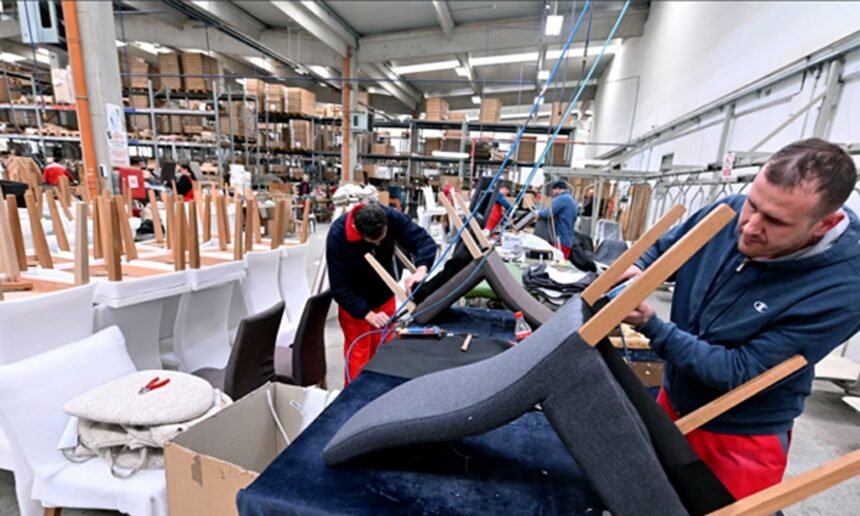The new tariffs imposed by U.S. President Donald Trump on imported wood, furniture, and kitchen cabinets came into effect on Tuesday. This development is expected to increase construction costs in a market that is already challenging for many buyers.
According to the White House, the duties were implemented to strengthen the U.S. industry and protect national security. They are part of a series of sector-specific tariffs that Trump has introduced since returning to the presidency.
The latest measures include a 10% tariff on softwood imports, while duties on certain upholstered furniture and kitchen cabinets start at 25%.
Furniture, doors and windows, and wood construction materials have been among Kosovo’s main exports to the U.S. in recent years.
From January 1, the rate on imported upholstered furniture is expected to rise to 30%, while tariffs on kitchen cabinets and wardrobes will increase to 50%.
However, duties on wood products from the UK will not exceed 10%, and those from the EU and Japan will face a ceiling of 15%.
All three trade partners have reached agreements with the Trump administration to avoid harsher tariffs.
It is still unclear what the new tariffs will mean for Kosovo, which has already removed the 10% import duty on all U.S. products.
However, the new tariffs will “create additional barriers for an already difficult housing market, further raising construction and renovation costs,” warned Buddy Hughes, president of the National Association of Home Builders (NAHB).
In announcing the latest tariffs, Trump said that the Secretary of Commerce had found that “wood products are used in critical functions of the Department of Defense, including building infrastructure for operational testing.”
Trump’s statement added that U.S. wood production remains underdeveloped, leaving the country dependent on imports.
However, Hughes from NAHB said that “imposing these tariffs under the pretext of ‘national security’ ignores the importance of housing for the physical and economic security of all Americans.”
He called for an agreement to “remove tariffs on construction materials.”
Canada, a major supplier of wood to the U.S., is also expected to be affected. The 10% tariff on wood is added to existing duties, which the U.S. recently raised to 35%, bringing the total tariff on Canadian wood to 45%.
Stephen Brown from Capital Economics told AFP that, with 30% of U.S. wood imported, a 10% tariff could increase the cost of building an average house by $2,200.
Brown also noted that China, Vietnam, and Mexico account for the majority of U.S. furniture imports. He expects Vietnam to be the most affected, “as furniture accounts for 10% of its exports to the U.S.”
The tariffs were imposed under Section 232 of the Trade Expansion Act of 1962, the same provision Trump used earlier this year to levy tariffs on steel, aluminum, and vehicles.







